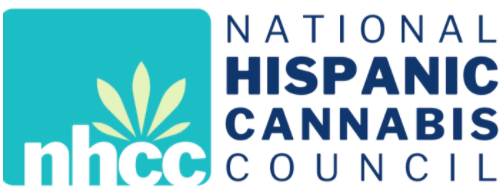Merit-Based Inclusion Starts Here
A fair and thriving cannabis industry begins with equal access to opportunity.
Join the National Hispanic Cannabis Council as we reimagine what inclusion really looks like.
For too many, social equity programs have missed the mark. It’s time for a better approach—one rooted in merit, readiness, and real support.
Join us to explore how we can:
• Remove outdated barriers to entry
• Ensure historically impacted communities have a true path forward
• Rethink how states evaluate and support applicants
• Replace symbolic efforts with evidence-based equity
Diversity drives innovation. Fairness fuels growth. Let’s design an industry that works for everyone.

Why Reviewing and Improving Cannabis Social Equity Programs is Critical
Without ongoing review and reform, social equity programs risk becoming symbolic efforts with no real impact. States must take an evidence-based approach to refine these programs, ensuring they truly create opportunities for those most affected by cannabis prohibition.
Part I: Paved with Good Intentions

The intention of a social equity program in the cannabis industry is to address the harms caused by the War on Drugs, particularly in communities disproportionately impacted by cannabis criminalization. These programs aim to create economic opportunities, promote diversity in ownership, and ensure that those most affected by past cannabis prohibition have a fair chance to participate in the legal industry.
Without targeted social equity efforts, the legal cannabis industry risks becoming another space where marginalized communities—who suffered most under prohibition—are shut out while large corporations profit. A well-structured program can level the playing field, create generational wealth, and restore economic opportunities to those who were historically criminalized.
Social equity programs in the cannabis industry aim to address the disparities caused by historical drug enforcement policies, particularly in marginalized communities. While many states have implemented such programs, their effectiveness varies. However, some states have developed promising initiatives that offer valuable insights into effective social equity strategies.
Get It All in Your Inbox
Get this entire series as it’s published directly to your inbox. Stay informed and help shape the present of cannabis in the USA.
Up Next in Merit-Based Inclusion:

PART II: Promise of a Golden Ticket
Why these programs don’t meet the intentions.

PART III: Things Done Well
While no state is perfect, some states have been successful at varying levels to help promote and support the applicants.

PART IV: The Goals of a Social Equity Program
Ideal goals of a merit-based social equity program that works

PART V: Elements of Effective Social Equity Programs

PART VI: Key Policy Recommendations
Marrying the goals and the elements of a Social Equity Program for each individual state

PART VII: Kansas - A Clean Slate
Social Equity in Kansas in the Cannabis Industry
Get It All in Your Inbox
Get this entire series as it’s published directly to your inbox. Stay informed and help shape the present of cannabis in the USA.
